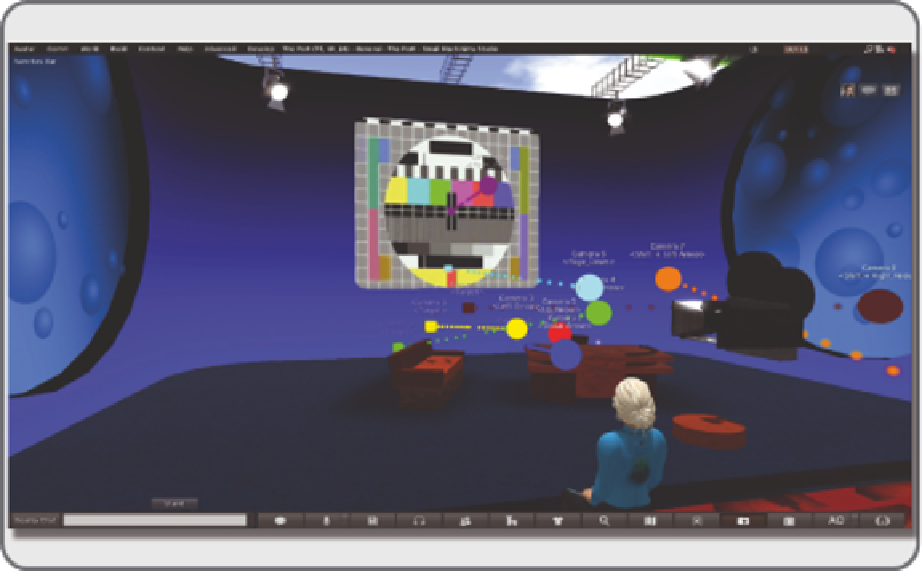Game Development Reference
In-Depth Information
FIGURE 9.2
Virtual television studio in a virtual world. Designed, built, and scripted by Annabeth Robinson
(AngryBeth Shortbread in Second Life). This virtual studio can be found in The Port region of Second Life.
as well as control of the depth of ield. As you can see from the middle and bottom images in Figure 9.3,
once this effect is added into your scene, the difference a lens makes on the view and the resultant change in
a sense of perspective when the camera is at eye line level is very clear.
This view of digital information, with the addition of lens distortion and perspective, is what an avatar's
camera presents to our eyes. Very subtle changes in this effect can have great nuances of meaning in the way
we perceive things in a virtual world. Knowing what cameras do and how to utilize them for storytelling is
of paramount importance.
9.3.2 f
irsT
-
and
T
hird
-p
erson
p
oinTs
of
V
ieW
in
a
V
irTual
C
amera
The two most common points of view that a virtual camera employs in a virtual world are (1) irst person or
“mouse-look,” which shows the virtual world from your point of view with little or none of your body showing
in the frame, and (2) third person, which shows a typically wider and higher shot that includes your avatar's body
as well as the surrounding environment. Some shooter-based video games employ both irst- and third-person
points of view simultaneously since it is dificult to aim a weapon from the third-person camera view.
Obviously, in a game or a virtual world, the camera direction and movements are determined by where
the player decides the game character or avatar is going to travel in the environment. The carefully planned
arrangement of camera shots that build suspense or tell a story in a feature ilm cannot be achieved with this
kind of camera unless the control of the camera is taken over by a scripted device or the camera views are
recorded and edited into the desired sequence.

